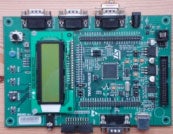 Can India become a global destination for electronics manufacturing? This question was center-stage at the ISA Vision Summit held in Bangalore recently by the India Semiconductor Association, which represents the country’s electronic system design and manufacturing industry. The theme of the event was “Growth Drivers for Emerging Markets: Semiconductors and Electronic Systems.”
Can India become a global destination for electronics manufacturing? This question was center-stage at the ISA Vision Summit held in Bangalore recently by the India Semiconductor Association, which represents the country’s electronic system design and manufacturing industry. The theme of the event was “Growth Drivers for Emerging Markets: Semiconductors and Electronic Systems.”
Currently, India accounts for only around 3% of the global electronics market and around 1% of global production. But industry leaders and government officials believe that with the huge increase in domestic demand fueled by a growing middle class and rising per capita income, the opportunity is there for India to become a significant global player.
Electronics sales in India were around $40 billion in 2009, and are expected to reach $100 billion by 2014 and $400 billion by 2020. Some players are optimistic that the market may grow to even higher figures. “We believe that by 2020, the domestic demand for electronic products in India can go as high as even $1 trillion,” Pradeep N. Dhoot, group president of Videocon Industries said during a keynote address. Dhoot pointed out that unlike the rapid expansion in India, the $1.75 trillion global electronics market has been posting annual growth in the low single digits for the past few years and is expected to continue at that pace.
India’s manufacturing opportunity lies in the gap between the expected demand in the country and the rate of domestic production. Although the market for electronics in India is expected to reach $400 billion by 2020, domestic production is only projected to account for $100 billion if it continues at the current pace. “Given the right impetus, the scale and the unique requirements of the Indian market will make it very attractive for players to design and manufacture here,” noted Ajai Chowdhry, chairman HCL Infosystems.
In a bid to develop indigenous capabilities in electronics, the Indian government has recently instituted a policy that will grant preferential market access in government procurement to electronic goods manufactured in India. With large pan-India government projects such as the national optical fibre network, the national knowledge network and e-governance programs in the works, this move would open up huge opportunities for domestic production.
Decisions regarding the opening of a semiconductor fabrication plant are also expected to be finalized by the end of the year. Sachin Pilot, minister of state for communications and information technology, said that the earlier government attempts to set up such a facility did not yield the desired result. “We are more flexible this time round and are ready to meet halfway. We have decided that we will get it done,” he noted. R. Chandrashekar, secretary of the department of IT and department of telecommunications added that “significant progress has been made and we are in serious discussion with a few players.”
One of the key concerns of the industry has been that there is not enough value addition and enough intellectual property creation in the country. The preferential market access policy stipulates that there must be 25% to 40% value addition. “This means that the [intellectual property] must be in India,” Chowdhry said. “This will give the confidence to industry players to make the necessary investments. I see it as a breakthrough and transformative step.”
Similarly, the setting up of a fabrication plant is seen as an important piece of the electronics manufacturing ecosystem. ”It has to be seen in the larger context,” according to Rajendra Kumar Khare, chairman and managing director of SureWaves, a Bangalore-based company that is creating an integrated grid for multiple forms of digital media. “India has tremendous design capabilities and most global [original equipment manufacturers] have strong design centers in India. Having a [fabrication facility] will go a long way in strengthening the entire [electronics system design and manufacturing] ecosystem in the country. This, in turn, will enable India to capture a larger pie of the domestic and global market.”



